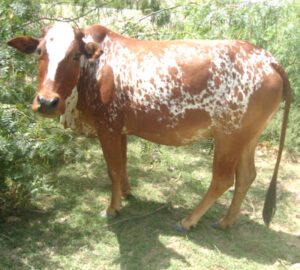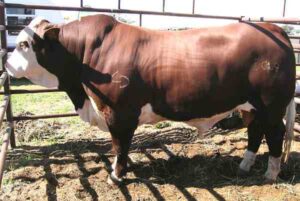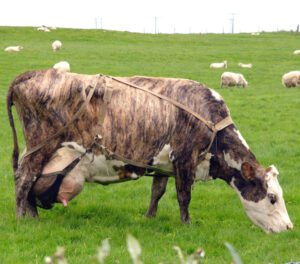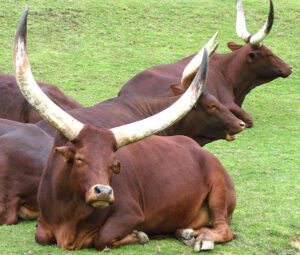The Ramo Grande cattle breed is from the island of Terceira in the Portuguese archipelago of the Azores. The breed has it’s origin in the early cattle brought by the first settlers to this island in the 15th century, from Portugal and Flanders.
Ramo Grande cattle received it’s name from the northern part of the island, a plain called Ramo Grande.
The Ramo Grande is in the municipality of Praia da Vitória, where the cattle breed continue to breed the best examples of this large format cattle species.
The early varieties of cattle which were introduced onto the islands included Alentejan, Minhotan, Algarvian and Mirandese. These varieties quickly adapted to the local conditions over the following centuries.
The Ramo Grande cattle breed was a dominant cattle species on the island of Terceira and surrounding islands until the beginning of the 1970s (until the breed was superseded by other beef or dairy cattle breeds.
Ramo Grande cattle lost much of it’s traditional functions with the dissemination of mechanized agricultural production. But the breed was raised as examples of the breed for ethnographic purposes such as for pulling traditional carts.
The breed became less popular as a dairy breed after the introduction of exotic dairy cattle breeds which were producing higher volumes and quality of milk.
The local farmers were more interested in protecting the Ramo Grande cattle breed by the late 20th century, with the establishment of a 1996 technical specification for the pure breed. And the number of the animals are increasing gradually.
There were 227 registered examples by 1996, and were 546 registered animals by 2004. Read some more information about this multi-purpose cattle bred below.
Ramo Grande Cattle Characteristics
Ramo Grande cattle are medium sized animals. They are easily characterized by a large well-formed head, little forelock and slightly prominent frontal protuberance with a convex profile.
They have a reddish-brown matte coat, and both bulls and cows have curved horns. Like most other cattle breeds, the Ramo Grande bulls are much heavier than the cows.
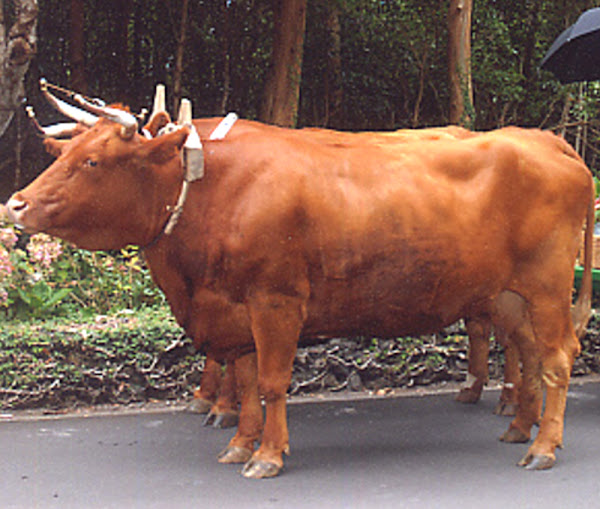
The cows on average weight about 550 kg. And average body weight of the bulls is about 900 kg. Photo and info from Wikipedia.
Uses
The Ramo Grande cattle are multi-purpose animals. They were historically used in transport and agricultural work. They are also good for both milk and meat production.
Special Notes
Ramo Grande cattle are very hardy and suitable for agricultural works. They are also good for the production of milk and meat. Their natural habitat is the northeast corner of the island of Terceira along a fertile plain, designated Ramo Grande.
The breed is also popular in most of the archipelago of the Azores. The Ramo Grande cows are pretty good milk producers. The cows on average produce about 2414 kg of milk per lactation.
And their milk contain about 3.8 percent of fat content. Review full breed profile of this breed in the following chart.
| Breed Name | Ramo Grande |
| Other Name | None |
| Breed Purpose | Milk, meat, work |
| Special Notes | Docile, hardy |
| Breed Size | Medium |
| Bulls | About 900 kg |
| Cows | About 550 kg |
| Climate Tolerance | All Climates |
| Coat Color | Reddish-brown |
| Horned | Yes |
| Milk Yield | Good |
| Rarity | Common |
| Country/Place of Origin | Portugal |

